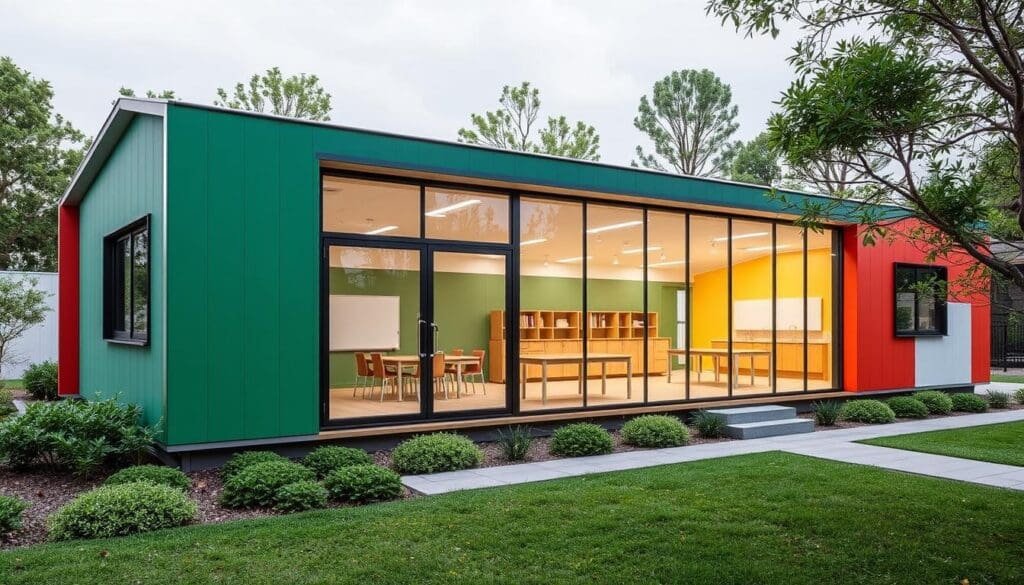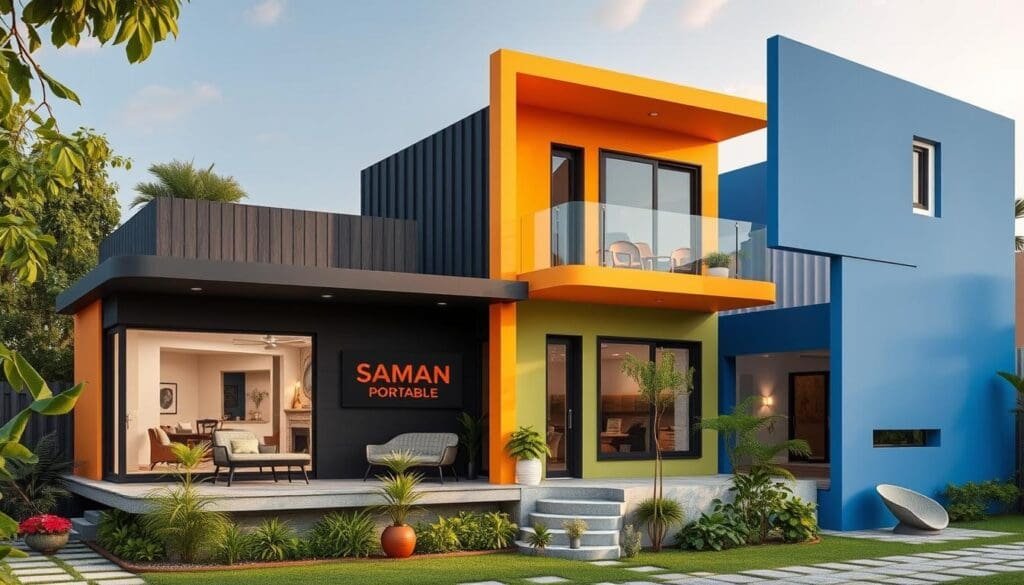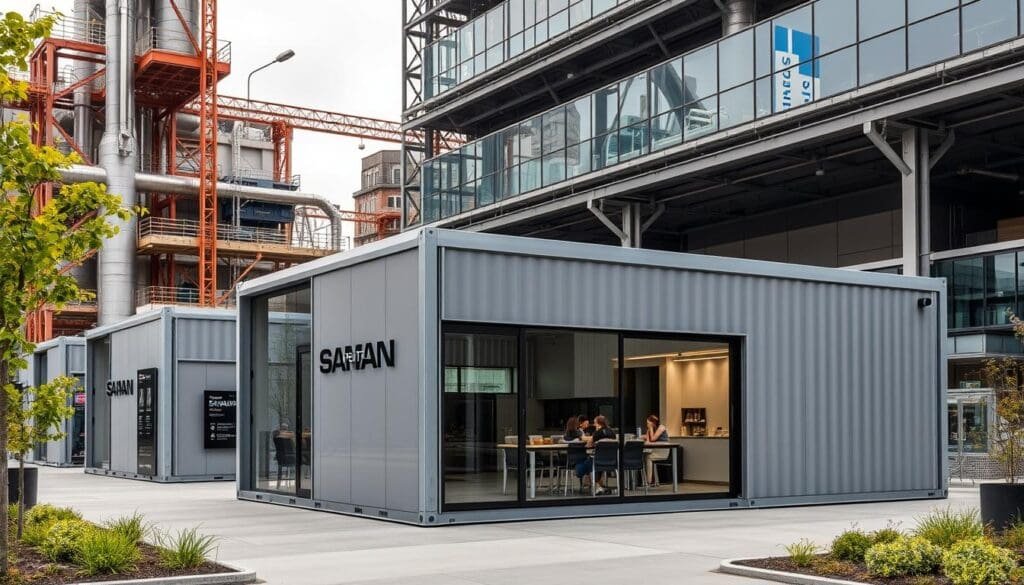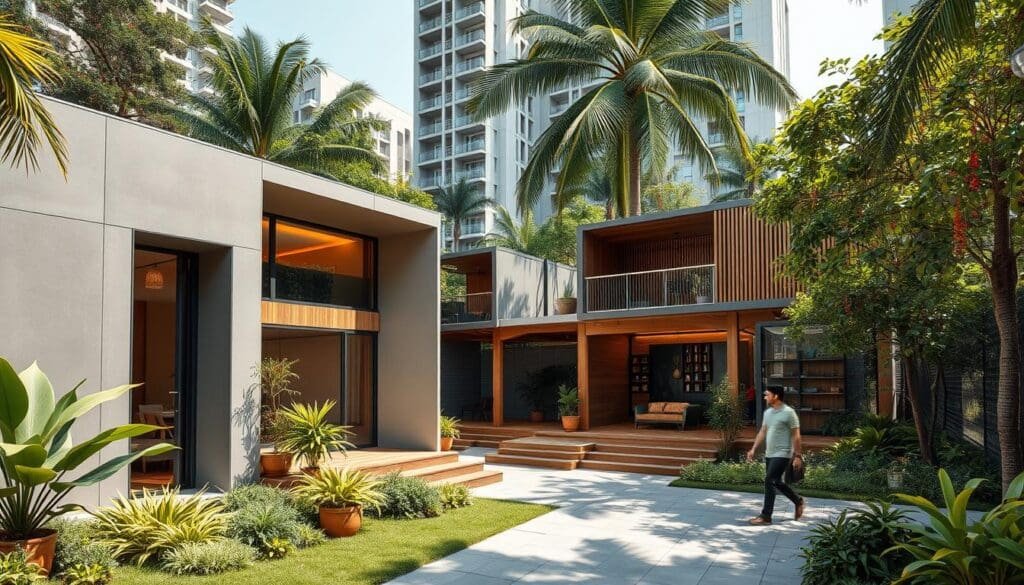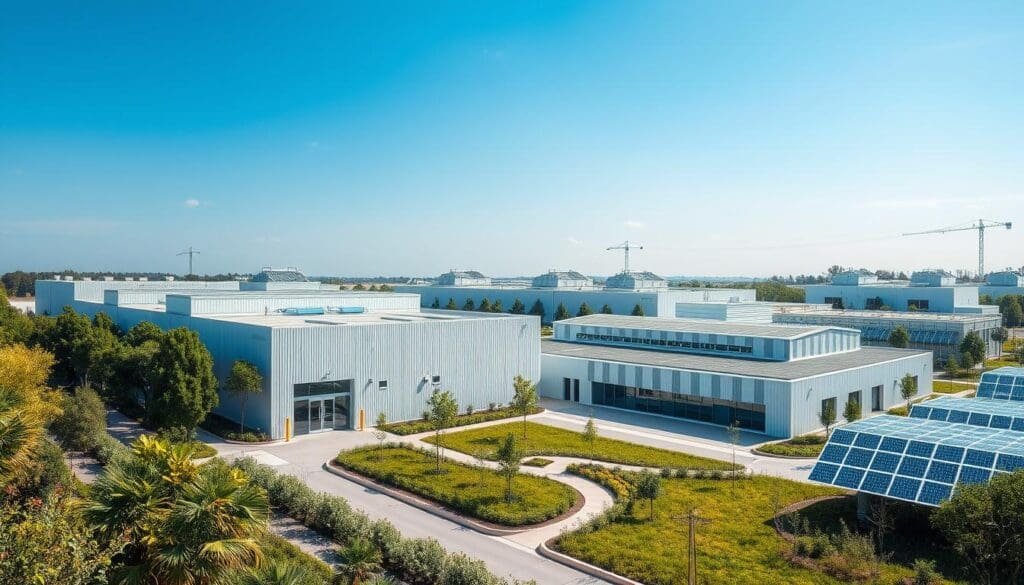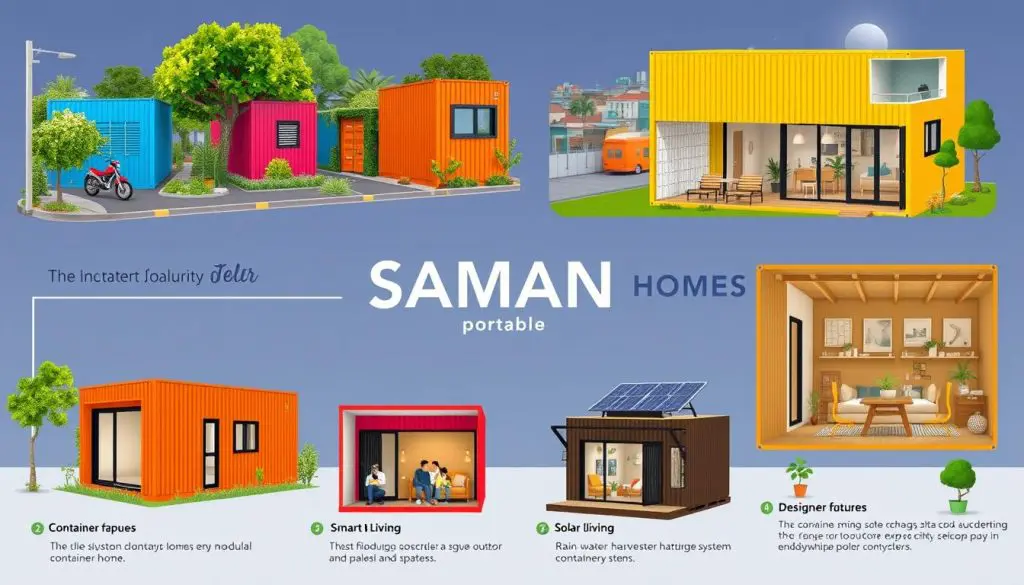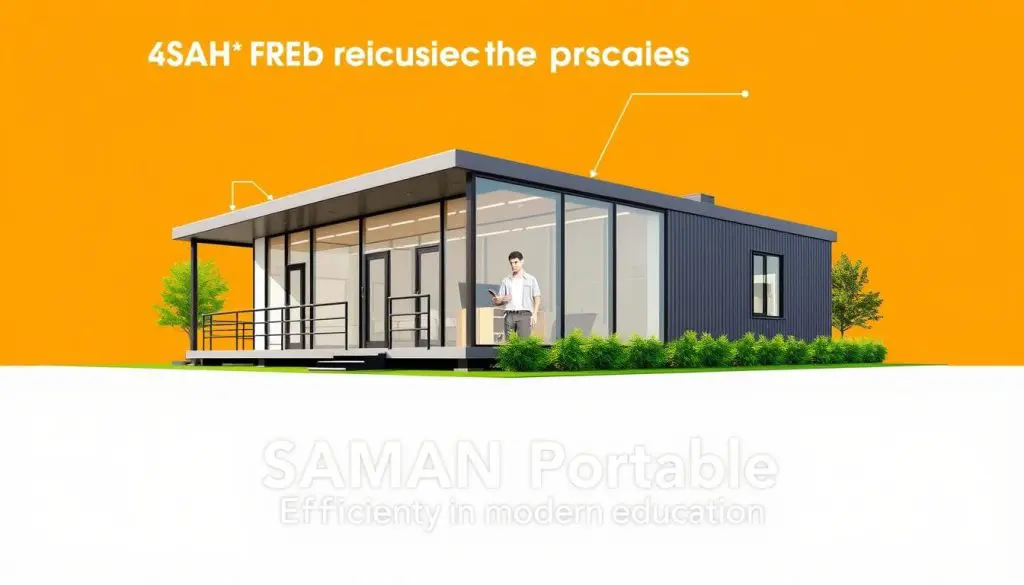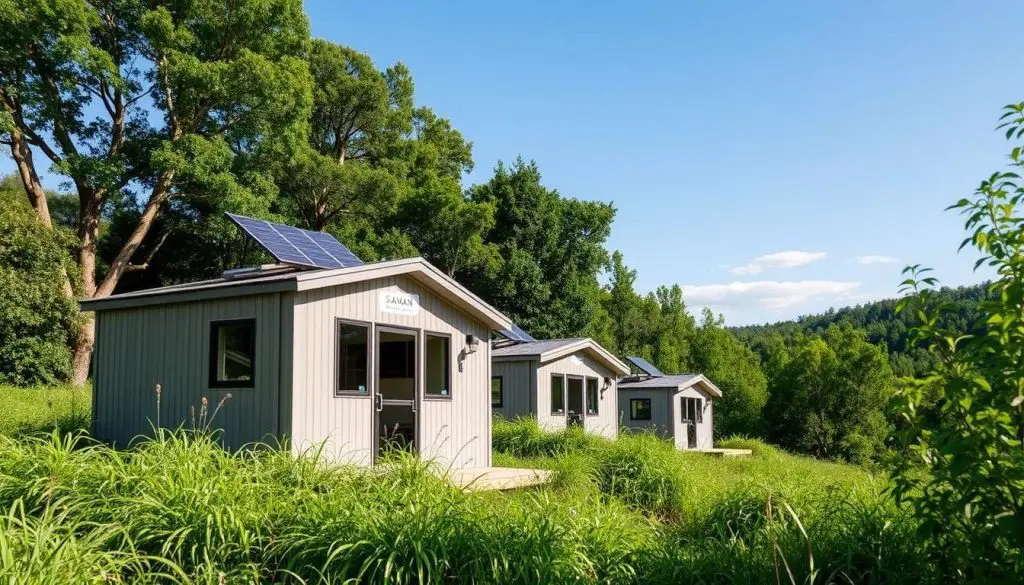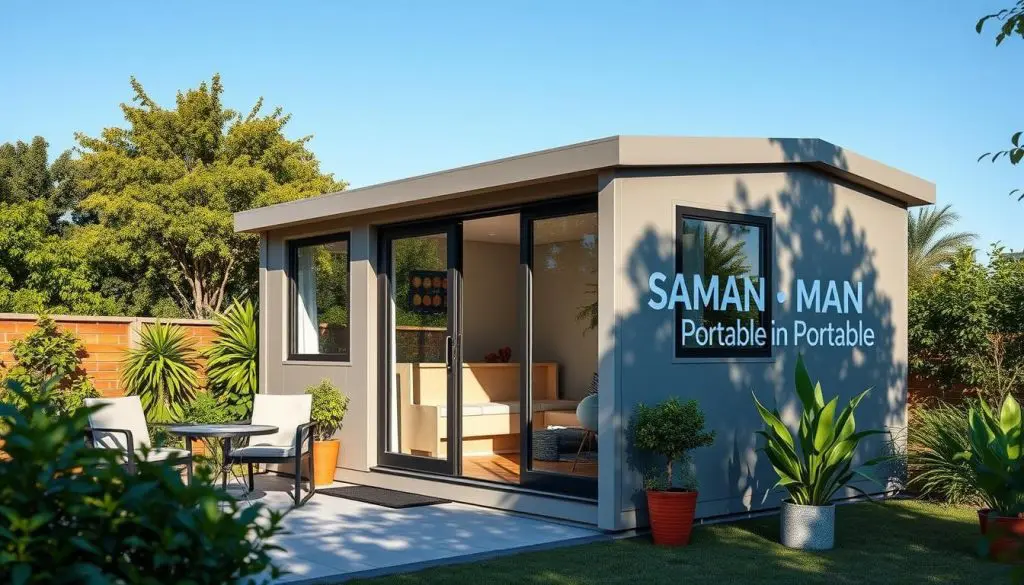Best Materials for Portable Cabins: Build Smarter, Stronger, and More Sustainable Spaces
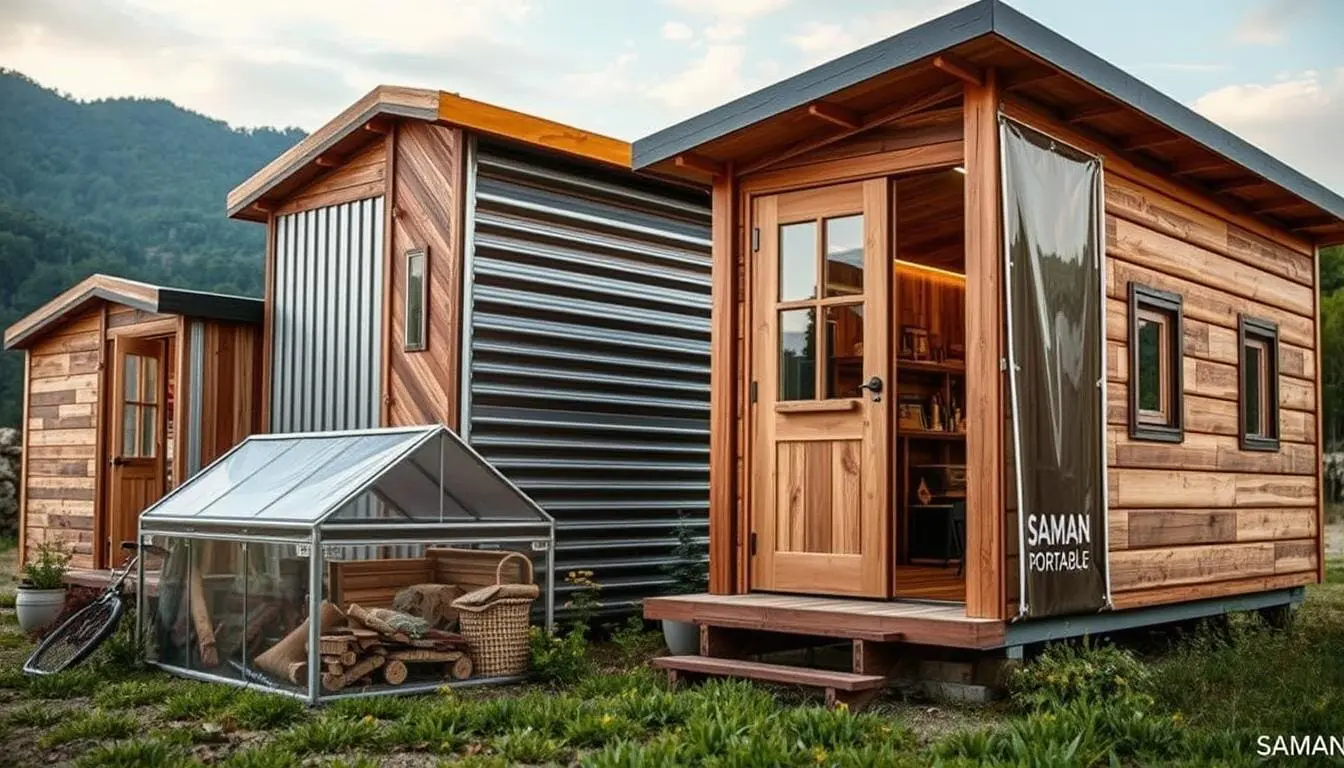
The demand for portable cabins in India is growing fast. With over 30 million people in construction, the need for smart, adaptable, and green spaces is huge. Portable cabins offer a solution, and the right materials are key to making them work.
So, what materials are best for portable cabins? They need to last long, handle different climates, and meet changing building rules. Let’s dive into the top picks for building the best portable cabins.
Key Takeaways
- Discover the top materials used in modern portable cabin construction, from high-strength steel to energy-efficient Polyurethane Foam (Puf) panels.
- Learn how the choice of materials impacts structural integrity, climate adaptability, and compliance with building standards.
- Understand the benefits of modular and prefab construction techniques, which can reduce construction time and weight by up to 70%.
- Explore the role of Puf panels in creating sustainable, energy-efficient portable spaces that are functional and visually appealing.
- Gain insights into the cost considerations and long-term value of different material options for your portable cabin project.
Understanding Portable Cabin Construction Fundamentals
Building portable cabins requires knowing the basics. It’s about load-bearing, climate, and more. Each part is key to making these spaces strong and lasting.
Load-Bearing Requirements and Structural Integrity
Portable cabins must handle their own weight and more. This includes people, furniture, and snow. Solutions like Saman Labor Colony use Light Gauge Steel Framing (LGSF) and panelized construction. This makes them strong and dependable.
Climate Considerations in Material Selection
The weather where you build affects material choice. In tough climates, hybrid construction is a good choice. It mixes hot-rolled frames with Light Gauge Steel Frames (LGSF). This keeps the cabin safe and warm.
Using 3D Volumetric construction and plastic-coated steel on walls also helps. It makes the cabin better at fighting off bad weather.
Building Code Compliance and Standards
Following building codes is essential for portable cabins. Prefab construction makes sure of this. It checks everything from the factory to when it’s set up.
This careful process ensures the cabin is safe. It meets rules like the Portable Buildings Permit in Montana. Or the planning permission for bigger or more used structures.
Best Materials for Portable Cabins: Essential Components Guide
Portable cabins are becoming more popular for their flexibility and cost-effectiveness. They are great for quick setup and saving money. Choosing the right materials is key for building strong and efficient portable cabins.
At the core of a good portable cabin are lightweight cabin materials. These materials must be strong, keep the inside temperature right, and be easy to move. PUF (Polyurethane Foam) panels are a top choice. They block sound well and keep the temperature steady, all while being strong.
- PUF panels are tough and durable cabin components. They work well in tough places, making them perfect for portable cabins in hard-to-reach areas.
- They are light, making the cabin easy to move and set up. You don’t need big machines to do it.
- These panels also keep the cabin warm or cool and quiet. This makes the space comfortable and saves energy.

Portable cabins can also use other lightweight cabin materials and durable cabin components. You can find everything from strong aluminum frames to weatherproof outside covers. Each part is picked to make the cabin strong, flexible, and easy to change.
Designers use the best materials to make portable cabins work well in many places. They focus on new ideas and being green. This makes portable cabins a big deal for the future of workspaces.
Engineered Wood Products and Their Applications
Engineered wood products are now a top choice for building portable cabins. They offer strength, durability, and are cost-effective. Materials like Oriented Strand Board (OSB) and Cross-Laminated Timber (CLT) bring many benefits to your cabin projects.
Oriented Strand Board (OSB) vs. Plywood
OSB and plywood are both used in portable cabins. But they’re made differently and have unique qualities. OSB is made from wood strands and resin, making it cheaper and more uniform. Plywood, with its wood veneers, is stronger and more stable.
Both are great for carrying weight, but your choice depends on what’s available and your budget.
Cross-Laminated Timber Benefits
Cross-Laminated Timber (CLT) is a new favorite in portable cabins. It’s made by stacking lumber at right angles and gluing them together. This makes CLT strong, stable, and fire-resistant.
It’s perfect for walls, floors, and roofs in cabins.
Treated Lumber Solutions
Treated lumber is also key for portable cabins. It’s wood that’s been treated to fight rot, decay, and bugs. This keeps your cabin strong for years, especially outside where it’s exposed.
Knowing about engineered wood and treated lumber helps you choose the right materials for your cabin. These options help you build cabins that are smart, strong, and eco-friendly.

Metal Frame Options and Durability Features
Choosing the right materials is key for durable portable cabins. Metal frames, especially steel, are gaining attention. They offer more strength than traditional methods, perfect for tough environments.
Modular cabins with metal frames are popular for their durability. Steel cabins can handle heavy loads, keeping them safe in harsh conditions. This makes metal frames ideal for cabins that need to be strong and adaptable.
- Steel prefabricated office cabins are priced at approximately Rs 50,000 per piece.
- Mild steel modular prefabricated portable cabins cost around Rs 1.3 lakh per piece.
- Saman Portable Cabin’s prefabricated portable cabins are designed to be 100% reusable and recyclable, promoting sustainability.
- The company’s frames are built to resist heavy loads, highlighting the ultimate structural durability of their cabins.
- Light Gauge Steel Framing (LGSF) is about 40-50% lighter than other construction materials like wood, enhancing construction speed.
Using metal frames, manufacturers can create strong, flexible cabins. These cabins meet many needs and last a long time. They’re great for anyone looking for a reliable, adaptable space.

Innovative Insulation Materials for Temperature Control
Choosing the right insulation is key for a cozy and energy-saving portable cabin. We’re thrilled to share the newest insulation tech. It helps control temperature in your eco-friendly cabin.
Spray Foam vs. Traditional Insulation
Spray foam is a top pick for insulated cabin panels. It expands to fill gaps, offering great air sealing and thermal resistance. It beats out traditional insulations like fiberglass or cellulose in terms of R-value.
Eco-Friendly Insulation Alternatives
Looking for green insulation? Mineral wool and cellulose insulation are great options. Mineral wool is made from natural rock and slag, offering thermal and soundproofing benefits. Cellulose, from recycled paper, is another eco-friendly choice for walls and attics.
R-Value Considerations
The R-value is key when picking insulation for your cabin panels. It shows how well insulation keeps heat out. Choose materials with a high R-value for better temperature control, especially in colder climates.

Knowing the pros and cons of different insulations helps you choose wisely. This ensures your cabin is warm, energy-efficient, and eco-friendly.
Weatherproof Siding and Exterior Finishing Materials
Choosing the right siding and exterior materials is key to protecting your portable cabin. We’ll look at durable cabin components and portable cabin construction materials. These options will keep your cabin safe, secure, and looking great.
Vinyl siding is a top pick for its long life and low upkeep. It can last over 30 years with the right care. Engineered wood siding, meanwhile, comes with a 50-year warranty. It’s a strong choice against the weather.
For a rustic feel, T1-11 siding is a good pick. It might need painting every 3-5 years. Fiber cement siding is durable and fire-resistant. It comes with a 30-year guarantee or more.
- Metal siding is versatile and can last up to 50 years. It’s also 67% recyclable.
- Engineered wood siding is very durable. It often has a 5/50-year warranty, beating other materials.
- Vinyl siding is easy to clean. Just a simple rinse is needed, making it a low-maintenance choice.
The cost of siding varies. Vinyl costs $3.50 to $8 per square foot. Metal or steel is $4 to $8. Traditional wood is $7 to $12. Engineered wood is $5 to $10. Cedar shingles or grooved plywood (T1-11) can cost up to $68 and $7.20 per square foot, respectively.

Choosing high-quality durable cabin components and portable cabin construction materials is wise. They ensure your cabin lasts long and looks good for years.
Roofing Materials for Maximum Protection
The roof is key in portable cabin building. The right materials offer protection, energy savings, and eco-friendliness. We’ll look at metal, composite shingles, and green roofing options.
Metal Roofing Systems
Metal roofs are popular for their strength and long life. They handle wind, rain, and snow well. Plus, they’re fire-resistant, making them safe for your cabin.
Composite Shingle Options
Composite shingles offer a traditional look. Made from materials like asphalt and plastics, they’re durable and easy to care for. You can choose from many colors and styles to match your cabin’s look.
Green Roofing Solutions
Green roofs are eco-friendly and save energy. They use plants and soil for insulation and to reduce water runoff. These roofs make your cabin healthier and more sustainable.
Choosing the right roof depends on your climate, local rules, and upkeep needs. The right material ensures your cabin is safe, cozy, and eco-friendly. It meets your sustainable living goals.

Sustainable and Eco-Friendly Material Choices
We’re working hard to make living spaces more sustainable. At Loom Crafts, we focus on eco-friendly cabin options. These choices help reduce environmental harm and make your space more comfortable.
Our prefabricated cabins are made with less waste and more efficient materials. This is because we build them in our factory. It lets us use lightweight cabin materials better, cutting down on waste.
We also use renewable energy like solar panels and wind collectors. Plus, we look into biofuels for heating. This all helps lower your cabin’s carbon footprint.
At Loom Crafts, we want to help you build a cabin that’s good for you and the planet. We use new materials and green tech to make your space cozy and eco-friendly.
Our cabins use materials that can be recycled and energy-saving systems. Choosing Loom Crafts means your home will show your dedication to the environment. It’s a step towards a greener future.
Cost Analysis and Material Comparison
Building a portable cabin is a smart move for your business. It’s important to know the costs and compare materials. At SAMAN Portable Office Solutions, we offer detailed cost analysis and material comparisons. This helps you make the best choice.
Initial Investment vs. Long-Term Value
The cost of starting a portable cabin project might seem high at first. But, the long-term benefits and savings often make it worth it. Benefits include faster construction, lower material costs, and the ability to move the cabin.
Maintenance Requirements and Costs
- Portable cabins need little upkeep, with just quarterly cleaning and bi-annual checks.
- Annual checks on ventilation and repainting every 3-5 years keep the cabin looking good and strong.
- Maintenance for prefab cabin kits is cheaper than traditional buildings, saving you money.
Material Lifespan Assessment
The durability of materials in portable cabins is key to their value. Our team looks at how long different materials last. This includes wood, metal, and insulation. We give you all the facts to choose wisely.

Our team combines knowledge of portable cabins with detailed cost and material analysis. We help you find the right balance between cost and value. Discover how SAMAN Portable Office Solutions can help your project thrive.
Conclusion
Choosing the right materials for portable cabins is key. You can make smart, strong, and eco-friendly spaces. These can meet your unique needs.
Weatherproof siding and energy-efficient insulation are important. Customizable layouts and security features add to their versatility. Portable cabins are truly remarkable.
They can be a cost-effective office, a secure checkpoint, or a cozy living space. The right materials make a big difference. Focus on long-term value, low maintenance, and environmental impact.
This way, your portable cabins will serve you now and in the future. They will also support a sustainable future.
When starting your portable cabin project, look for the best balance. Choose materials that are both durable and sustainable. This way, you can create lasting, adaptable spaces. These spaces will improve your business and the planet.
FAQ
What are the main construction techniques used for prefab homes in India?
In India, prefab homes are built using three main methods: modular, panel-built, and manufactured. These homes are made with top-quality materials like steel, concrete, and wood. This ensures they are strong and meet building codes.
What are the essential components and materials for portable cabin construction?
Key components for portable cabins include PUF panels for insulation and engineered wood for structure. Metal frames are also used for their strength and long life.
How do climate considerations affect the selection of materials for portable cabins?
Climate is very important when choosing materials for portable cabins. In places like hilly regions, the right materials help cabins last longer. They must handle temperature, wind, and rain well.
What are the advantages of using steel-based prefab buildings for portable cabins?
Steel prefab buildings are very strong and last long. They’re great for portable cabins, especially in tough places like hills. They offer long-lasting durability.
How do eco-friendly and sustainable materials contribute to the environmental impact of portable cabins?
Using eco-friendly materials like biofuels and renewable energy lowers the environmental impact of cabins. These choices support sustainable building and aim for zero energy homes.
How can cost analysis and material comparison help in making informed decisions for portable cabin projects?
Doing a detailed cost analysis and comparing materials helps in choosing the right cabin materials. Look at the upfront cost, long-term value, and maintenance needs. Also, consider government incentives for green building.
 Container Cafe
Container Cafe
















































































